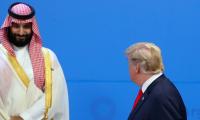LAHORE: The circular economy represents a transformative shift towards sustainability, offering Pakistan significant opportunities to address environmental challenges, particularly in the textile sector. While countries like the European Union (EU), Japan and India are at the forefront of circular practices, Pakistan lags but has immense potential to make strides with strategic investments and policy reforms.
A circular economy is an economic model focused on reducing waste and maximising resource utilisation by reusing, repairing, refurbishing and recycling materials. It creates a closed-loop system that minimises environmental impact and promotes long-term sustainability, contrasting with the traditional ‘take, make, dispose’ linear model.
Globally, the circular economy is reshaping the textile industry by addressing issues like fast fashion and textile waste. Recycling fibres from used garments into raw materials for new products, reselling pre-owned clothing, and upcycling discarded items into higher-value products have gained traction. Leading brands have integrated recycling technologies to manufacture new garments, setting benchmarks for sustainability.
In Pakistan, the recycling industry is growing but remains small-scale, primarily focused on cotton waste recycling for producing yarn used in low-value applications like wiping cloths and insulation.
The absence of modern infrastructure and technology for efficiently collecting and processing textile waste has hindered the industry’s expansion. Unlike Pakistan, India and Bangladesh have established advanced recycling facilities and circular production systems, positioning themselves as regional leaders in sustainable textiles.
Pakistan’s textile industry, with its vast scale and access to abundant raw materials, has the potential to adopt circular economy practices. However, this will require significant investments in technology, skill development, and collaborations with global brands. Currently, the sector lacks the integration into global circular economy networks seen in India and Bangladesh. These countries benefit from government incentives and private sector initiatives that support circular textiles, which are largely absent in Pakistan.
Bangladesh recycles 30 per cent of its pre-consumer textile waste, and its factories are equipped to integrate circular production systems that reuse textile scraps to produce new garments. India excels in upcycling and high-value recycling. Cities like Panipat serve as global hubs for recycling old clothes into yarn used in blankets and rugs. India has also developed robust policies like extended producer responsibility (EPR) for waste management and has cultivated collaborations with organisations like the Ellen MacArthur Foundation to promote circular design programmes.
Experts estimate that India and Bangladesh are 5-10 years ahead of Pakistan in adopting circular textile practices. The primary factors driving this gap include their advanced infrastructure, strong global partnerships, and supportive policy frameworks. Pakistan’s limited involvement in global circular economy initiatives, coupled with insufficient government incentives, has restricted its progress in this area.
Globally, the EU has emerged as a leader in circular economy practices, driven by policies such as the European Green Deal and the Circular Economy Action Plan. Japan has excelled in recycling used materials, particularly in the electronics and automotive industries. South Korea focuses on reusing components from e-waste, while China advances in recycling rare earth materials and metals. The US is making strides through private sector initiatives aimed at circular practices.
Our country can bridge this gap by investing in recycling technologies, fostering partnerships with global brands, and introducing government policies to support circular practices. With targeted efforts, the textile sector has the potential to position itself as a key player in the circular economy, aligning sustainability with industrial growth.
A woman picks a gold earring at a jewellery shop in the old quarters of Delhi, India, May 24, 2023. —...
Representational image shows a man using a laptop. — Unsplash/FileLAHORE: Cybercriminals are shifting tactics,...
A worker sorting kinnow at an orchard in the agricultural town of Bhalwal, Pakistan. — AFP/FileKARACHI: Pakistan...
A representational image of armed terrorists. — Reuters/FileLAHORE: The ongoing wave of terrorism in Pakistan is...
A man watches an electric board showing Nikkei index outside a brokerage in Tokyo, Japan in this 2021 file photo. —...
The flags of the United States and China fly from a lamppost in the Chinatown neighbourhood of Boston, Massachusetts,...







